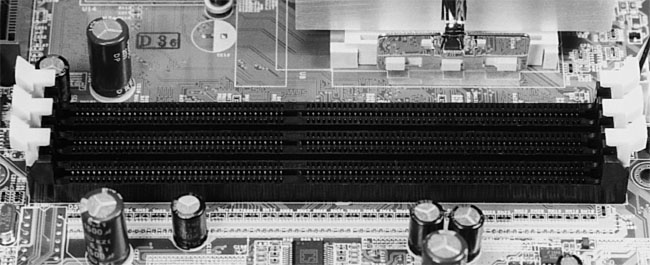 |
|
 |
How to Build Your Own PC - Save A Buck And Learn A Lot 9 Chapter 3: Installing the CPU, Heatsink, and RAM On The Mainboard 9 Installing Memory (RAM) |
|
Preparing to Install the RAM
RAM is very sensitive to static electricity. Before picking up a RAM chip, touch both hands to a metal piece to draw any static electricity away from your hands. You might also want to wear a grounding wrist strap when you install the memory. Try to touch the RAM only on its two sides and the top near the sides (see Figure 5). The sides are great for picking it up, but you’ll need to push it into its socket from the top. Try not to touch the chips themselves or the metal contacts. And, leave the RAM in its original packaging until you’re ready to install it.
Not touching the metal leads of the memory is also important because oils that build up on your hands can damage the leads.
Examine the RAM sockets (Figure 38) and the RAM chip (Figure 39). You’ll see that RAM can only be inserted in one direction, because there’s a small cut out separating the metal contacts (also called leads) on the RAM chip into two sides. Each side has a different number of metal contacts, making it impossible to seat the RAM chip incorrectly. Be sure the notch in the RAM chip is aligned with the protruding part on the RAM socket.
|
|
Home - Table Of Contents - Contact Us
How to Build Your Own PC (/byop/) on PCGuide.com
Version 1.0 - Version Date: May 4, 2005
Adapted with permission from a work created by Charlie Palmer.
PCGuide.com Version © Copyright 2005 Charles M. Kozierok. All Rights Reserved.
Not responsible for any loss resulting from the use of this site.






